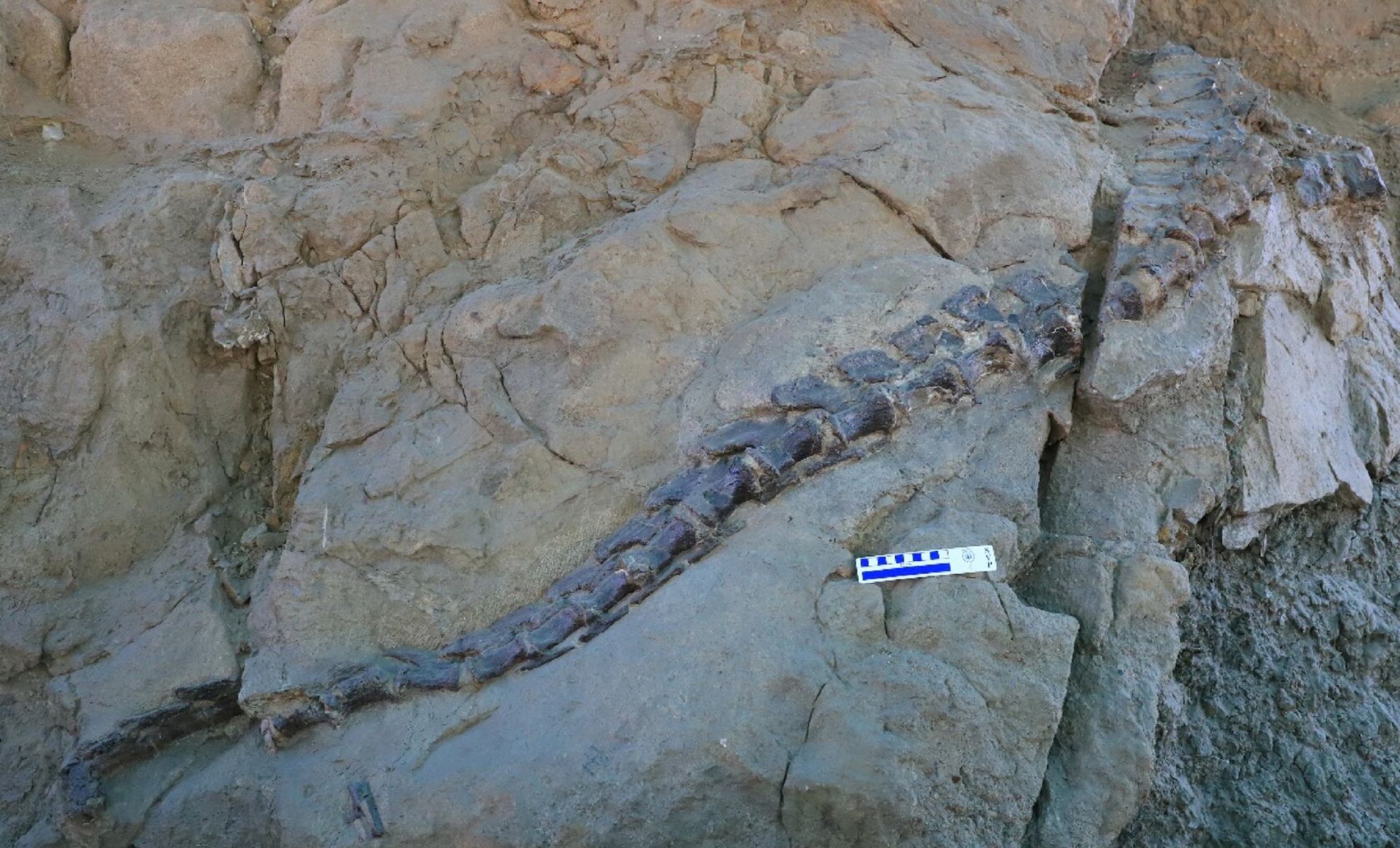A research team from the China University of Geosciences has made a significant discovery dating back to the Middle Jurassic period. They have identified a new sauropod species, named Jinchuanloong niedu, based on a nearly complete skull and partial skeleton found in northwestern China.
This fossil was discovered in the lower section of the Xinhe Formation within the Jinchuan District in Gansu Province. Estimated to be around 165 to 168 million years old, the specimen includes a nearly intact skull with mandible, five articulated cervical vertebrae, and 29 articulated caudal vertebrae. Researchers believe this specimen is a juvenile or subadult, with a projected body length of approximately 10 meters.
The nearly complete cranial remains present a rare opportunity to study non-neosauropod eusauropods, offering new insights into the anatomy of these long-necked dinosaurs. It is thought that Jinchuanloong niedu belongs to the clade of non-neosauropod eusauropods, a group representing nearly all long-necked dinosaurs, apart from the earliest varieties.
Upon analyzing Jinchuanloong’s anatomy, researchers observed a compelling mix of primitive and advanced characteristics. The study employed detailed anatomical comparisons with other sauropods from East Asia, focusing on both cranial and postcranial morphology. As a result, Jinchuanloong was identified as a diverged non-neosauropod eusauropod, closely associated with the Turiasauria and Neosauropoda clade. This positions the new species within a significant evolutionary lineage, offering fresh perspectives on Middle Jurassic sauropod evolution.
One of Jinchuanloong’s most notable features is its distinct cranial structure. The skull contains a foramen at the base of the maxillary ascending process, an opening on the anterodorsal surface of the prefrontal, as well as a robust postorbital characterized by a remarkable height-to-length ratio. Additionally, the maxillary teeth are spoon-shaped when viewed from the labial side, a characteristic it shares with other sauropods such as Shunosaurus and Turiasaurus.
This remarkable discovery adds to the known diversity of early diverging sauropods from the Middle Jurassic. The nearly complete cranial remains provide an invaluable look at the craniofacial evolution of early eusauropods, aiding scientists in understanding the ecological niches occupied by these ancient giants. The fossil is regarded as an exceptional find.
In their study, the researchers highlight the significance of Jinchuanloong niedu within the broader context of sauropod diversification during the Middle Jurassic. This species offers critical information regarding the evolution of sauropods in northwest China, enhancing our comprehension of these long-necked dinosaurs and their ecosystems.
As scientists continue their examination of the fossil, they aim to uncover further details about the life and behavior of Jinchuanloong niedu, which will enrich our understanding of sauropod evolution during this formative period. “The discovery of Jinchuanloong niedu enriches the diversity of early diverging sauropods and provides additional information to help understand the evolutionary history of sauropods in northwest China,” the authors concluded.

